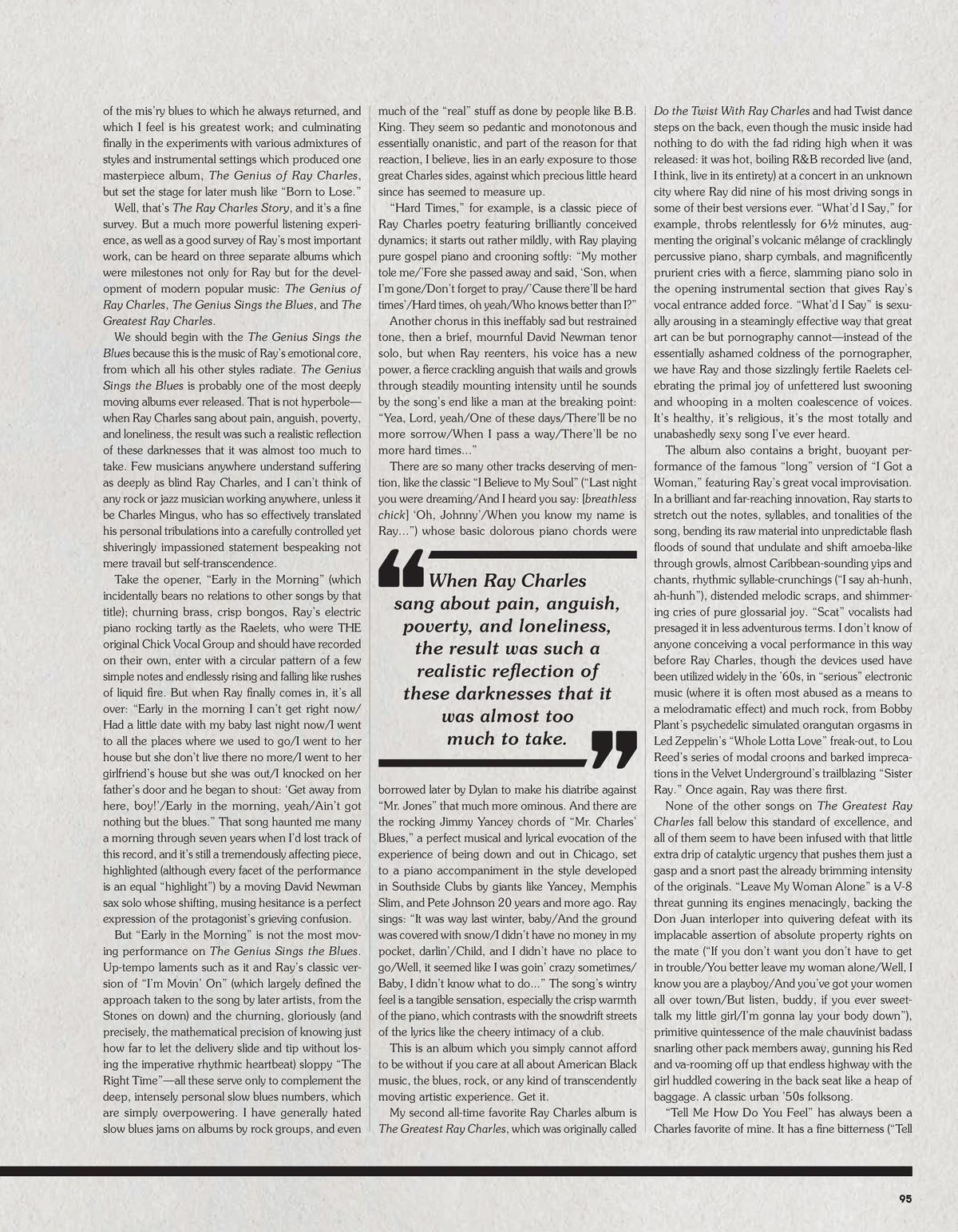I REMEMBER RAY
December 1, 2023


At just 22, Lester wrote a respectful reverie on Ray Charles’ repertoire, recalling how stirred he was hearing his hits “What’d I Say” and “I Got a Woman” as a teenager—and how he still gets chills. He’s rocked and awed with each piercing wail, whoop, and growl, praising the sizzling keyboards and impeccable arrangements, from “boiling blues” and groundbreaking R&B to gospel, swing, and jazz—Ray defined soul.

